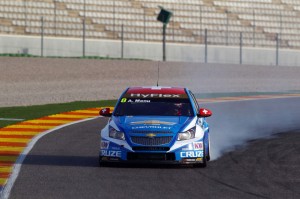
There is a myth out there that a car without ABS will stop sooner than a car with it turned on. The myth is based around that a fact that a locked wheel generates more friction than turning wheel. In the real world, where wheels are attached to a vehicle with brakes that can do more than lock, the myth is busted.
Brakes convert forward momentum into heat. While not as dramatic as skid marks, it is an effective way to stop a two-ton vehicle. If the wheels are locked, there is no energy dissipated by friction in the brakes and it take a longer time to dissipate, meaning a longer time to stop.
The friction of the brakes works together with the friction of the tire on the road. It is a balancing act between brake friction and tire friction to achieve the best results.
If the basic physics, mechanical and ABS elements are properly tuned, the stopping distance is very close to its theoretical limit. Virtually all properly functioning brake systems optimize these factors to within a few percent.
Look at any summary in a car magazine and you will see that stopping distance from one vehicle to another can vary drastically. So how do we account for this? Two other factors come into play. First, the magnitude of the peak braking efficiency. Essentially it comes down to the tire. A “stickier” tire has a higher peak and therefore has the potential to generate more stopping force and thus shorter distance. Secondly, All four wheels must be operating at their individual peak simultaneously to achieve the true theoretical limit. Here is where the weight balance of the vehicle and the corresponding relationship between front and rear brake sizing become important. It is common to find brake pad advertising dramatic improvements in stopping distance. Claims of improvement are often seen boasting 20-, 30- even 45-percent improvement. With the above understanding, these claims should be viewed with a healthy dose of professional skepticism. If the governing factors were designed properly and functioning correctly, there is very little room for improvement. Since the laws of physics employed here date back to Mr. Newton in the 1600s and are well known within every brake department at all car companies and brake companies, it is doubtful there are many stones left upturned. If a product can really generate the claimed improvements in a true comparison, it should be clearly understood what compromise the vehicle engineer chose or was forced to make to create the sub-optimal result in the test.